
Introduction:
Designing and releasing a new CPU architecture is risky business. You are essentially trying to forecast consumers interest, software and hardware development for the lifetime of that product. No doubts about it it is a gamble. If your forecast, the market analysts, or your developers are wrong your new architecture goes no where. For an easy example, just take a look at the VIA C7 or the Pentium D; neither of these CPU’s took market hold and both fell short of their promised potential.
Today we have the launch of another new architecture from AMD, their first major release since the Athlon 64. Now for history buffs let’s flash back to the Athlon 64 release, it not only took the market by storm it also held the performance crown and enthralled enthusiasts for years. That hat trick was not easily accomplished but the Athlon architecture persisted was enhanced and modified for the Phenom series, and has finally been replaced by Bulldozer.
 Click on the Thumbnail for a Larger Image
Click on the Thumbnail for a Larger Image
A Game Changer:
Bulldozer introduces the first consumer 8 core CPU with good performance and a low price. In fact Intel may find AMD’s pricing to be the most challenging aspect of bulldozer to deal with. Considering PIB (processor in a box) cost the i7 2600K is priced more than $200 than the AMD FX-8150 in review here. The full lineup pricing is as follows:
- FX MODELS AT LAUNCH
- FX-8150 -$245
- FX-8120 -$205
- FX-6100 -$175
- FX-4100 – $115
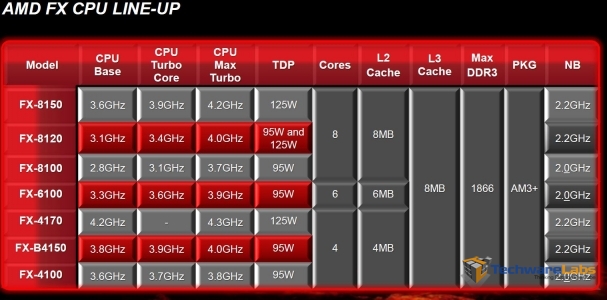
For a mere $175 AMD has introduced consumers to their next gen CPU with a sub $200 price, 8 cores, and a host of advanced features and performance.
So lets step into the Bulldozer and see what this new architecture from AMD holds for you.
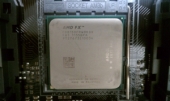
Click on the Thumbnail for a Larger Image
A Look into a Real Path Clearer
At first glance the bulldozer certainly looks the part of a serious contender. Consisting 4 bulldozer modules with 2 cores each for 8MB L2 cache total and 8 MB L3 cache the bulldozer comes prepared and it certainly seems that AMD has listened to consumers desires for more cache. The bulldozer also has two 72-bit wide DDR3 channels, and 4 16-bit hypertransport links as well as extensive enhancements to power efficiency and scalability.
Bulldozer represents Major improvements in:
- Power/area efficiency
- New ISA support
- Scalability
- Modular design
- Significant improvement in performance/watt/mm2
Power Efficiency
A major theme of the new architecture is power efficiency leading to a “power when you need it, energy saving when you need it” philosophy. AMD accomplishes this through C6, Core P, and C1E states which in essence allow the system to either scale back or completely shut down cores and various other parts of the bulldozer CPU.
Additionally the bulldozer circuits are power-gated dynamically, similarly the TDP is dynamically adjustable per core on the fly through the APM tool and there is extensive flip-flop clock–gating throughout the design. What all this means is that as the user you will see lower temperatures at idle with the ability to have the system automatically wake up and come to full strength upon demand, all this without the loss of data and with significantly lower latency during idle down and wake up periods.
In terms of P states:
- There are three P states
- Base P state. Frequency of the Part
- P2 – All cores activated
- P0 – Half cores activated to maximum frequency
The following graphic explains how P-states works:
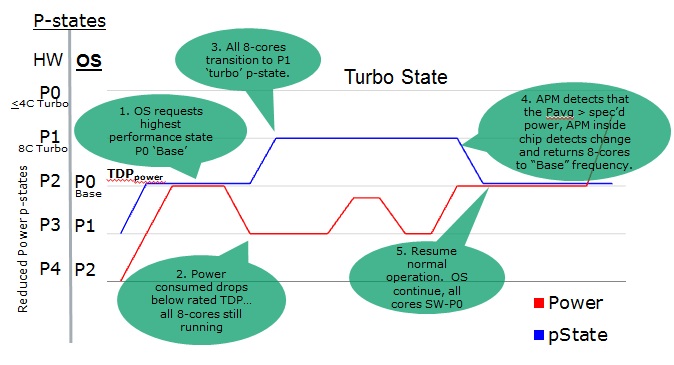
What this means for the FX-8150 in review here is that the 8150 will operate in three modes when not overclocked:
- Base P state of 3.6 GHz/core for all 8 cores
- P2 state of 3.9 GHz/core for all 8 cores
- P0 state of 4.2 GHz/core for 4 cores while the remaining cores are at idle or 0 Hz.

Click on the Thumbnail for a Larger Image
Similarly these power states will be found in all new bulldozer CPU’s. For the overclockers and enthusiasts the immediate question is “does this means that the bulldozer is TDP bound?” and the answer is yes, but by design. AMD has set an uppper TDP limit of 125Watts though any particular bulldozer part can exceed its rated TDP for instances but not over a significant timeframe. The CPU will throttle on a per millisecond basis.
Bulldozer and its Successors:
Over time AMD will eventually release updates to Bulldozer that enhance its ability and which are targeted towards additional platforms and purposes. These successors are code named: Zambezi, Valencia, and Interlagos.
 Click on the Thumbnail for a Larger Image
Click on the Thumbnail for a Larger Image
- Zambezi – Targeted towards the Desktop
- Piledriver will bring new likely bring new socket design that AM3+ cpu’s will be able to move to. Meaning same pin out.
- Zambezi is for use with AMD 9 series Chipsets
- Support for DDR 1866
- Hypertransport up to 5.2 GT/s
- AM3+ processors compatible
- Valencia – Server
- Drop in replacement for 4000 series
- 2 Mem channel – UDIMM, RDIMM, LRDIMM up to DDR 1600
- 3 HT links up to 6.4 GT/s
- Advanced platform management
- Interlagos – server
- Two die in multichip module for 1-4 socket systems
- 16 core each chip
- Drop in for 6100 series
- Two die in multichip module for 1-4 socket systems
Platform:
As you are all well aware a good platform can make or break the deal so let’s take a refreshed look at AM3+ and the new 990FX.
AM3+ Platform:
- AM3+ socket infrastructure adds:
- Support for CPU voltage loadline
- Increased ILDT current for higher frequency HyperTransport™link
- Increase in DRAM current
- AM3 processors plug-in compatible
- 2 memory channels, unbuffered DIMMs, up to DDR3-1866
- For use with AMD 9-Series chipsets

The Bulldozer Architecture Inspected:
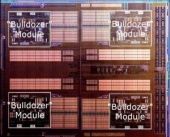 |
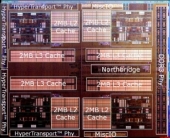 |
Click on the Thumbnail for a Larger Image
As you can see by the magnified core above the basic architecture is broken into 4 units with two cores each. Each CPU (8 total) shares 2MB of L2 Cache and 2MB of L3 Cache for a total of 8MB L2 and 8MB of L3. Each unit supports two threads of execution which offers greater scalability and predictability than two threads sharing a single core such as is the case in hyperthreading. The benefit to single core application is that when only a single thread is active it has full access to all shared resources.
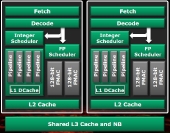 |
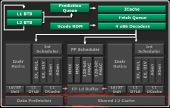 |
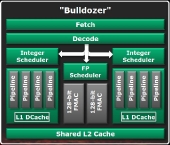 |
Click on the Thumbnail for a Larger Image
The shared nature of this micro architecture has significant impacts on multi-threaded applications. For applications that are multiprocessor aware for up to 4 processors the Bulldozer CPU will shift into its P0 state and run at 4.2 GHz on four cores. For applications that will utilize more cores the Bulldozer is capable of running at 3.9 GHz as previously discussed on all eight cores to maximize performance. This is of course dependent upon the application making calls to the processor. If the application is optimized for multi core environments then the increase in performance will be excellent.
New Instruction Sets and Applications for the Bulldozer
| New Instructions | Applications/Use Cases |
| SSSE3, SSE4.1, SSE4.2 (AMD and Intel) |
• Video encoding and transcoding • Biometrics algorithms • Text-intensive applications |
| AESNI PCLMULQDQ (AMD and Intel) |
• Application using AES encryption • Secure network transactions • Disk encryption (MSFT BitLocker) • Database encryption (Oracle) • Cloud security |
| AVX (AMD and Intel) |
Floating point intensive applications: • Signal processing / Seismic • Multimedia • Scientific simulations • Financial analytics • 3D modeling |
| FMA4 (AMD Unique) |
HPC applications |
| XOP (AMD Unique) |
• Numeric applications • Multimedia applications • Algorithms used for audio/radio |
Capabilities Examined:
| Capability | AMD Phenom II X6 | Sandy Bridge | AMD FX-8150 |
| Execute 128-bit FP | Yes | Yes | |
| Support SSSE3, SSE4.1, SSE4.2 | Yes | ||
| Execute 128-bit or 256-bit AVX | Yes | ||
| Execute Two 128-bit AVX in 1 cycle | Yes | ||
| Execute 128-bit AVX & SSE in 1 cycle | Yes | ||
| Execute FMA operations (A=B+C*D) | Yes | ||
| Supports XOP | Yes | ||
| FLOPs per cycle (double precision x87) | 12 | 8 | 8 |
| FLOPS per cycle (128-bit AVX) | – | 32 | 64 |
| FLOPS per cycle (256-bit AVX) | – | 64 | 64 |
Now what this all means, is that at a surface glance the AMD FX-8150 looks to be a very capable processor with excellent support for current and future technology. How this equates to real world performance is another issue entirely. As you are well aware different processors are capable of different amounts of work per clock cycle. The feature set and instructions included in the FX-8150 certainly give it an edge in accomplishing new tasks in less time but its architecture comes into play and we will see just how optimized the FX-8150 is for work loads.
What the Bulldozer is and is not:
Bulldozer represents an excellent step forward for AMD and its first major architecture release since the AMD 64. That being said Bulldozer will not be an Intel i series dominator when compared clock for clock. Where Bulldozer will shine is in heavy multi-tasking and in applications that can take advantage of all eight of its cores. AMD has really thought ahead here as it’s only a matter of time before more and more applications are written to utilize the kind of processing power that Bulldozer makes available. At this point in time that list is small, and as such AMD has introduced P states which allow those applications that can’t utilize all of its cores to still utilize some but faster. What this means for you is that the Bulldozer is appropriate for nearly any task you give it.
AMD realizes that CPU power is playing a less and less relevant role in computing and will soon take a back seat to graphics. In this area AMD really shines as a competitive solution provider in both the CPU and GPU market. This is a statement that Intel cannot at this time make. Those people holding out for a competitive GPU solution from Intel may have to wait a long while as it’s is not their focus, though most would reasonably argue it should be. Those holding out for an Intel/Nvidia Merger may have to wait even longer and the corporate cultures and even their representatives have clashed before, as such a merger is unlikely unless these obstacles can be overcome.
In a multi-tasking environment Bulldozer will be not only the right choice but also the economic one. For the casual computing user Bulldozer future proofs their PC while costing much less. For the gamer, Bulldozer brings a marriage excellent CPU power and a platform designed specifically to provide an enhanced gaming experience and yet again costing less.
It’s a Win-Win for consumers, and unless Intel steps up the game soon we will see more consumers flipping to the green logo.

Test Platform:
- AMD Bulldozer FX-8150
- Asus Crosshair V Formula
- Crucial Ballastix Elite 2133MHz 9-10-9-24
- Crucial M4 SSD
- Windows 7 SP1 64bit All Updates
- EVGA Geforce GTX 580 Driver version 285.38
- Stock HSF
CPU-Z
|
|
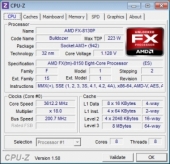 |
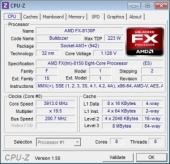 |
Click on the Thumbnail for a Larger Image
Sisoft Sandra
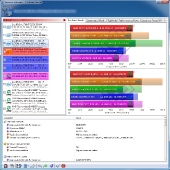 |
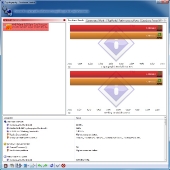 |
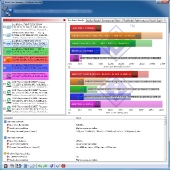 |
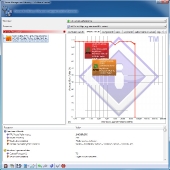 |
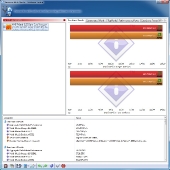 |
Click on the Thumbnail for a Larger Image
AIDA 64 Extreme
- CPU Benchmarks:
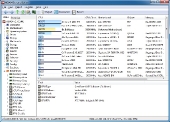 |
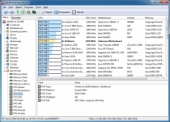 |
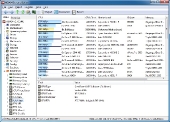 |
 |
 |
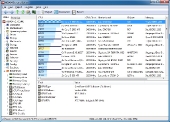 |
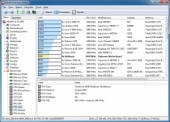 |
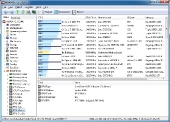 |
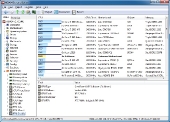 |
Click on the Thumbnail for a Larger Image
- Memory Benchmarks:
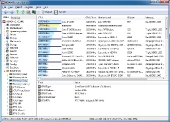 |
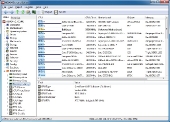 |
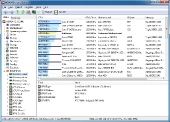 |
Click on the Thumbnail for a Larger Image
-
Fritz Chess
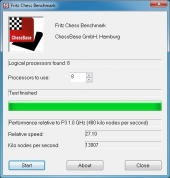 |
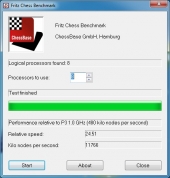 |
Click on the Thumbnail for a Larger Image
-
Geekbench 2.2
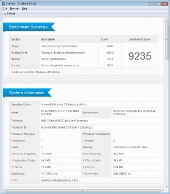 Click on the Thumbnail for a Larger Image
Click on the Thumbnail for a Larger Image

Benchmarks Continued
-
Cinebench
 |
 |
 |
 |
 |
Click on the Thumbnail for a Larger Image
-
Furmark
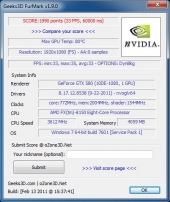 Click on the Thumbnail for a Larger Image
Click on the Thumbnail for a Larger Image
-
Windows Experience Index
 Click on the Thumbnail for a Larger Image
Click on the Thumbnail for a Larger Image
-
PassMark
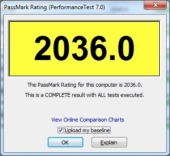 |
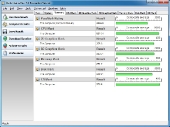 |
Click on the Thumbnail for a Larger Image
-
SuperPI v1.5
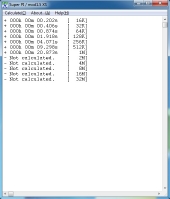 Click on the Thumbnail for a Larger Image
Click on the Thumbnail for a Larger Image
-
3DMark 11 Extreme
Click on the Thumbnail for a Larger Image

Benchmark Analysis
As you can see in almost all of the benchmarks the Bulldozer trades blows with the Intel i7 for first and second place. The Bulldozer pulls ahead of the i5 by a good margin in many benchmarks due to its frequency and additional cores. The multiprocessing power of the Bulldozer becomes especially clear when you look at applications like CineBench. Here we see a scene being rendered upon all 8 CPU’s. When rendered in multiprocessor mode the application gains 5.87X the speed of a single processor. When overclocked to 4.2GHz the CPU gains .85 points and renders even faster.
We are not seeing dominance over the i7 2600 so there is no new performance king. What we do see is a whole new level of multiprocessing capability and excellent scaling when the application can utilize all 8 cores. A good comparison is below:
 |
Click on the Thumbnail for a Larger Image
A CPU Intended for Overclocking and Gaming:
As if to drive the point home AMD will actually offer a SKU exclusive to the FX-8150 that comes bundled with watercooling by Asetek. This self contained system will allow overclockers to push their systems further and gamers to squeeze every last drop of power for their games.
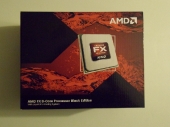 |
 |
Click on the Thumbnail for a Larger Image
The inclusion of a retail bundle of waterclocking with a CPU is an impressive statement in and of itself. AMD must have significant confidence in this product and its capabilities to offer such a product. We have been assured that the bundle price will be reasonable, affordable, and offered at a price point lower than purchasing both separately.
Overclocking
No discussion about an AMD CPU would be complete if we didn’t try to fry the CPU and push it as far as it will go until the magic smoke is released. To be honest we didn’t want to smoke this processor just yet but we did push it as far as we were comfortable going using air cooling.
Overclocking Setup and Parameters:
We used a combination of entering raw data and parameters into the UFI Bios as well as utilizing the onboard ROG Connect through a laptop to control settings real time while in windows. As expected we obtained our best results using ROG to control voltages and frequencies within windows from the laptop. ROG is a most excellent feature and should be included on all boards. It simplifies the process and reduces to hours what would normally take days to do.
CPU-Z Screenshots:
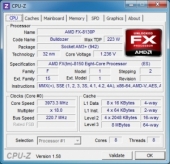 |
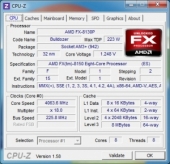 |
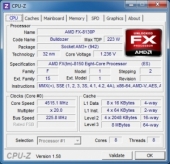 |
| 3973 MHz | 4063 MHz | 4515 MHz |
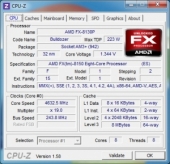 |
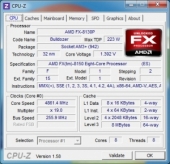 |
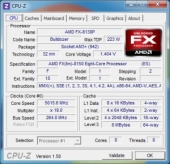 |
| 4632 MHz | 4861 MHz | 5015 MHz |
As you can see the Bulldozer overclocks nicely considering this is all done using a standard HSF. We were able to achieve an overclock of 5100 MHz but not stable. This was accomplished with a VCore of 1.45v and VDDR of 1.75v. The highest stable overclock we were able to achieve was 4.6 GHz. AMD was able to get us a retail sample of their bundled water cooling solution but not in time for us to test and publish so expect an update to this article when we have had a chance to test the unit out.
So let’s wrap this up.

The Bulldozer is not a perfect product as it is priced to compete with the i5 Sandy Bridge but often compares to lower processors. in certain tests the Bulldozer compares favorably while in others the i7 and i5 dominate with a good lead. It is obvious that the two cores per module have both helped and hindered the design as does the architecture’s tenancy to share resources like the FP scheduler L2 and L3 caches. These designs will be hard to modify or correct and could prove to hold back an otherwise startling design. Only time will tell if AMD’s decision to have this new architecture share resources and its emphasis upon energy efficiency pays off. Consumers will be hard pressed to choose Bulldozer over other higher performance parts on the market, though pricing favors AMD in these cases and current market conditions.
Given what we have seen in terms of scalability, multi-processing performance, gaming capability, and finally price it is obvious that AMD has the right recipe for success and is looking to bake a winner. Judging from the piece of the pie we have it is obvious that they have assimilated feedback from their experience with the APU and are brining a much more well thought out product to the market.
All in all the FX-8150 is one CPU in a tin can we are happy to recommend to you as an awesome piece of hardware. It has everything we want when looking for a performance rig and does it all while costing less than the competition. Without any flaws in the initial product release it more than qualifies for the TechwareLabs Awesome Hardware Award!
Congratulations AMD!

Gallery:
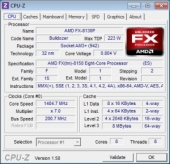
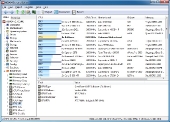
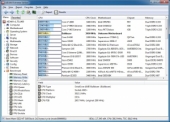
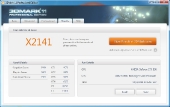
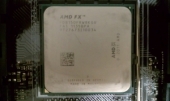
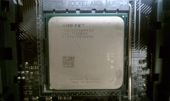
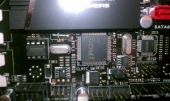
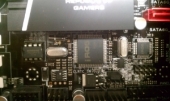
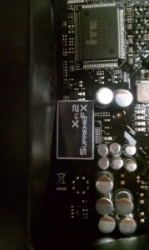
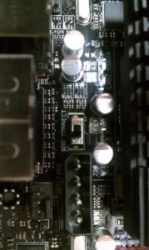
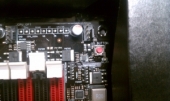
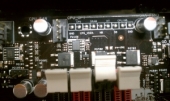
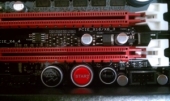
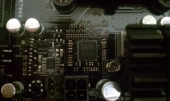
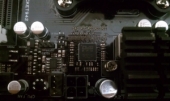
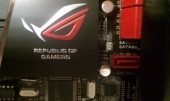



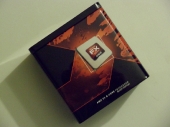

[…] – 万众期待的CPU!AMD推土机FX-8150首测 @ PConline – AMD年度大戏,推土机FX处理器首发测试 @ ZOL – 推土机降临!AMD新旗舰FX-8150首发评测 @ INPAI – AMD FX-8150 Bulldozer Preview @ lab501.ro – The Bulldozer Review: AMD FX-8150 Tested @ AnandTech – AMD FX-8150 Bulldozer CPU Review @ BenchmarkReviews – AMD FX-8150 ‘Bulldozer’ CPU Review @ Vortez – AMD FX-8150 (AM3+) 3.6GHz Bulldozer CPU Review @ TweakTown – AMD FX-8150 CPU Overclocking Review: A Bulldozer for Gamers? @ VR-Zone – AMD Bulldozer FX-8150 Processor Review @ HardwareCanucks – AMD FX 8150 processor review @ Guru3D – AMD FX-8150 8-Core CPU Review: Bulldozer Is Here @ HotHardware – AMD FX-8150 CPU Review @ Hi Tech Legion – AMD FX-8150 Processor Review @ HardwareHeaven – AMD FX-8150 Processor Review @ Legit Reviews – AMD’s FX-8150 “Zambezi” @ Lostcircuits – AMD FX8150 CPU Review @ Overclock3D – AMD FX-8150 Bulldozer CPU Review @ Mad Shrimps – AMD FX-8150 “Bulldozer” CPU Review @ neoseeker – AMD FX-8150 Review @ OverClockersClub – AMD’s FX-8150 Bulldozer Processor Review @ OverClockers – AMD FX – Codename “Bulldozer” @ Planet 3DNOW! – AMD Bulldozer FX-8150 @ PUREOC – AMD Bulldozer – FX 8150 Performance Review @ Rage3D – AMD’s FX-8150 ‘Bulldozer’ processor @ The Tech Report – Bulldozer Arrives: AMD FX-8150 Review @ TechSpot – AMD FX-8150 Bulldozer 8 Core CPU @ TechwareLabs […]